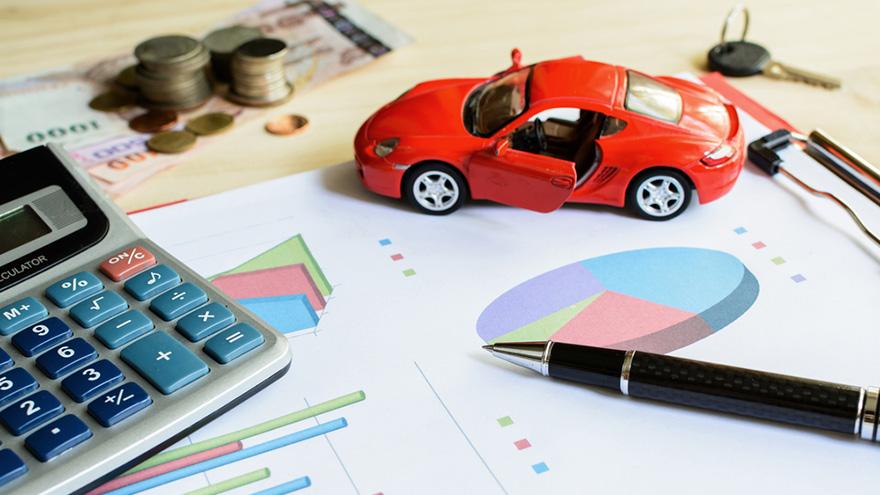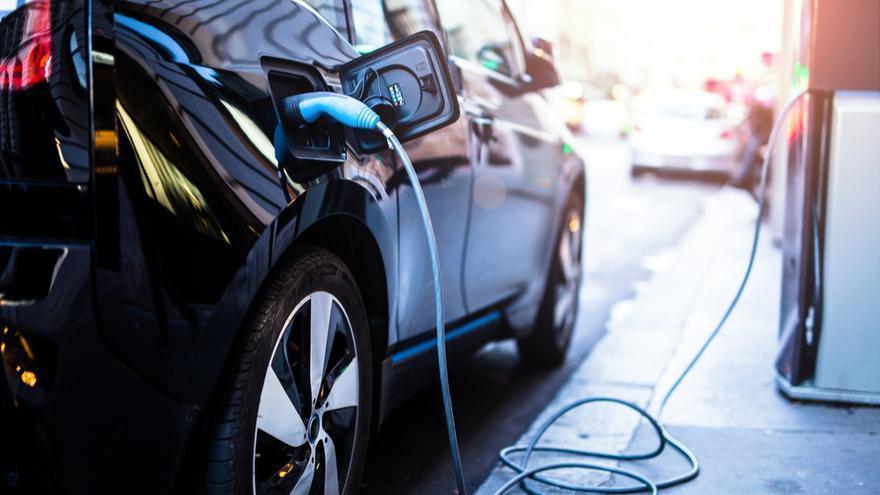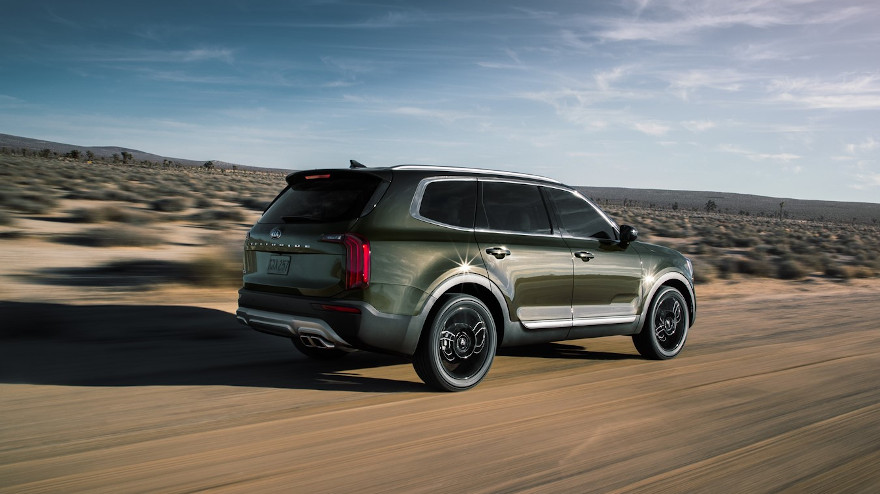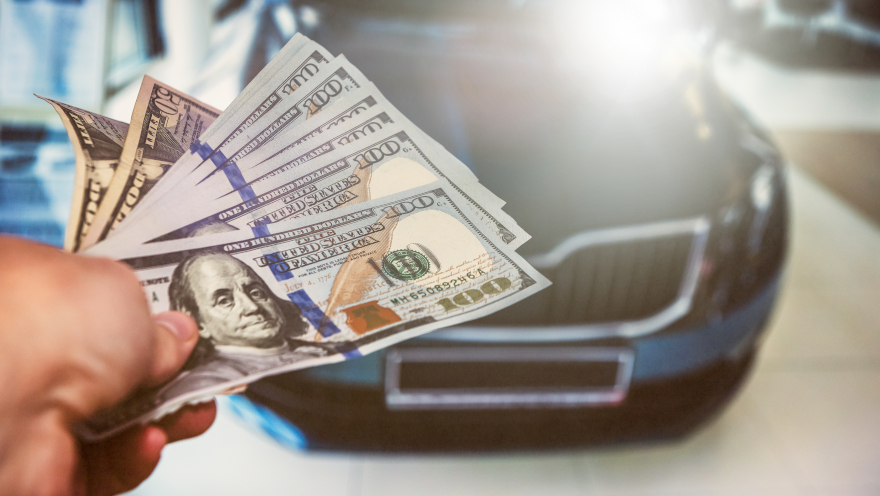Wholesale vehicle prices remain well-above year-ago levels, but April saw a continuation of month-to-month softening in values.
Black Book’s Used Vehicle Retention Index for April (185.4) was up 21.6% from a year ago, but fell 1.3% from March. This marked the third straight sequential decline in the index, which has seen the year-over-year spikes become less steep, as well.
After a 52.8% gain in January, the past three months have …
Read more
Retail prices on 1- to 5-year-old used cars last month showed some moderation from February, but still remain more than 30% higher than year-ago levels, according to an analysis from iSeeCars.com, which said the runup is particularly steep for fuel-efficient models and electrics.
The company examined 1.8 million transaction of used vehicles ages 1 to 5 in March, and found their average price was $34,429.
While that was bit of relief from the $35,029 average price tag in February, it was still …
Read more
After going six months without a sequential decline, Black Book’s Used Vehicle Retention Index has now fallen two months in a row.
Read more
They’re still up more than 40% from prior-year levels, but wholesale vehicle prices last month were more or less flat from December, according to the latest reading of the Manheim Used Vehicle Value Index.
Of course, the level at which used-car prices remain steady? It happens to be …
Read more
The wholesale vehicle market has started 2022 with some mixed signals, it appears.
After reaching an all-time in December, the Manheim Used Vehicle Value Index climbed another 0.8% in the first half of January. But that gain was largely driven by seasonal adjustment, Cox Automotive said in a Data Point report Wednesday.
“The non-adjusted price was statistically unchanged from December,” Cox said.
Still, wholesale prices remain quite elevated. In fact, the mid-month reading of the Manheim index is up 46.0% year-over-year and all major segments showed seasonally adjusted growth.
Van prices are up 60.4% year-over-year, compact cars are up 53.7%, midsize cars are up 50.5% and SUV/CUV prices have climbed 46.6%.
Luxury cars are up 36% from a year ago and pickup prices have increased 33.3%.
However, there was some slowdown from December.
“Compared to December, compact cars, luxury cars, and pickups saw small declines, all below 1%,” Cox said. “In the first half of January compact cars had the largest gain.”
Separately, the Manheim Market Report index has shown some softness in the first two weeks of the month.
“The Three-Year-Old MMR Index, which represents the largest model year cohort at auction, experienced a 1.3% cumulative decline over the last two weeks,” the company explained.
“Over the first 15 days of January, MMR Retention, which is the average difference in price relative to current MMR, averaged 98%, which indicates that market prices are trending down faster than valuation models,” it added.
The average daily sales conversation rate reached 52.5% in the first two weeks of January. That’s down from December (52.7%), but a bit above seasonal averages.
“The latest trends in the key indicators suggest wholesale used vehicle values will likely see further small declines in the second half of the month,” Cox said.
Elsewhere, Black Book has seen some of the same week-over-week declines to start the year.
For the week ending Saturday, the overall market was down 0.13% week-over-week. In the first full week of 2022, prices were down 0.15%.
The average change during the 2017 to 2019 time frame was a decrease of 0.56%.
Most segments in Black Book’s data set showed decreases last week, with vans bucking the trend.
In terms of how fast the market is moving, Black Book said: “Sales rates are improving compared to the end of 2021, but have not returned to pre-holiday levels.”
More details on Black Book’s latest Market Insights report can be found here.
It may feel like everything you buy these days is 40% more expensive than it was a year ago.
With used vehicles, that’s actually the case if you’re a car dealer.
Similar to other industry indices, the J.D. Power Valuation Services Used Vehicle Price Index reached an all-time high in November.
The index, seasonally adjusted, was at 216.7 last month, according to J.D. Power, which said this was a 38.7% increase from November 2020, when the index was at 137.5
November’s index score also beat October’s by more than 9 points. Compared to the market trough last December, November’s index was up 80 points.
“Used prices continue to be bolstered by new-vehicle production and inventory constraints, elevated levels of new vehicle customer-facing transaction prices, tightening levels of used supply and increased dealer focus on used-vehicle operations,” J.D. Power said.
The firm would also add: “Wholesale prices at the industry level increased nearly 1.5% in November, which was not only the best performance ever for the period, but also a significant improvement vs. the previous five-year average decline of 3%. While wholesale prices rose again, the pace slowed from increases in September (5%) and October (3.5%).”
As reported earlier this month, the respective Black Book and Manheim wholesale vehicle price indices reached a third consecutive record month in November.
The Manheim Used Vehicle Value Index was at 232.5 in November. Adjusted for mix, mileage and seasonality, this marked a 43.5% year-over-year increase, with wholesale prices climbing 3.9% from October.
Without those adjustments, wholesale prices were up 43.8% year-over-year and 1.9% month-over-month, Cox Automotive said.
The Black Book Used Vehicle Retention Index was at 189.9 points for November, marking a 9.7-point (or 5.4%) month-over-month increase and a 45.4% year-over-year spike.
“With no short-term resolutions to new inventory problems, dealers are continuing to spend money on used inventory, pushing wholesale prices up to new records across all segments in November,” Black Book chief data science officer Alex Yurchenko said in a news release.
“Cars of all sizes and vans had the largest increases as used and new inventory in those segments declined to much lower levels compared to other segments of the market,” Yurchenko said. “We expect the used-car prices to increase again in December, but at a much lower rate as the volume of new inventory is starting to level off and consumer demand is softening a bit with record breaking used retail prices.”
Used-car prices were also moving up on the retail side. Citing PIN data, the J.D. Power Valuation Services report noted a 1.8% month-over-month and nearly a 23% year-over-year gain in retail used-car prices at franchised dealerships.
iSeeCars.com analyzed more than 1.9 million November sales of used vehicles ages 1 to 5 and determined they fetched an average of $31,848.
This was 27.9% higher than the average selling price in November 2020. And in October, prices for the same group of used vehicles was up 24.9% year-over-year, according to iSeeCars.
“Used car prices had drifted down, slightly, since they peaked in June, but they are back on the rise again, with the average used vehicle priced nearly over $7,000 above where it was last November,” iSeeCars executive analyst Karl Brauer said in an analysis.
“With microchip shortage-related plant shutdowns persisting throughout the year, automakers have not kept pace with pent-up demand, and lingering supply constraints that are expected to continue well into 2022,” he said.
Moving back to wholesale, auction sales volumes continue to see challenges.
Year-to-date, there have been 3.62 million wholesale auction sales, which is 13% softer than the same period of 2020, according to J.D. Power.
And compared to pre-pandemic sales, they’re off 25% to 30%, the firm said.
In November, there were 234,000 auction sales, a 24% year-over-year decline and a 22% month-over-month drop.
“Mass market sales are certainly more constrained, currently more than 15% lower than a year ago, which is being amplified by massive reductions in passenger car wholesale volume,” J.D. Power said.
“Premium wholesale sales are faring better, as sales for this sector are down a slight 1% when compared with the same period a year ago,” it added. “This continues to be a major contributing factor as to why premium prices aren’t up quite as much as mass market.”
Though still up considerably from year-ago levels, wholesale vehicle prices in the first half of August were down slightly from the full month of July.
That’s according to the mid-month reading of the Manheim Used Vehicle Value Index.
Through 15 days of the month, the index was at 193.7. That’s up 18.3% from the midpoint of August 2020, parent company Cox Automotive said in its analysis of the index.
Wholesale prices in the first half of the month dropped 0.8% from the full month of July.
Breaking it down by segment, compact cars were up 13.6% year-over-year, midsize cars climbed 15.7% and luxury cars were up 15.0%. Meantime, pickup prices were up 14.4%, SUV/CUV prices jumped 18.8% and vans had the most significant growth at 25.3%.
Looking at Manheim Market Report prices, the Three-Year-Old MMR Index was up 0.4% in the first two weeks of the month.
“Over the first 15 days of August, MMR Retention, which is the average difference in price relative to current MMR, averaged 99.3%, which indicates that valuation models are moving very closely with market prices,” Cox said in the analysis.
The company also pointed out that sales conversation rate was up from July and is seasonally high.
“The latest trends in the key indicators suggest wholesale used vehicle values will likely see lower than normal depreciation in the days ahead,” Cox said.
In a similar analysis released this week, Black Book found that following the unprecedented run-up in wholesale values, prices continue to trend downward, as they dipped for the seventh week in a row.
Seven consecutive weeks also represent how long analysts have seen auction sales rates below 70%. During the week that ended Saturday, they moved up from 64% to 66%, “as sellers adjusted floors in reaction to the softening market,” according to analysts.
But Black Book detailed through its latest Market Insights that sales rates haven’t been above the 70% threshold since the close of June.
All told, overall wholesale values softened another 0.52%, according to Black Book’s newest report.
It’s like the old proverb, “a bird in the hand is worth two in the bush.”
Or to put it in automotive parlance, that late-model car a consumer can get their hands on now could be worth more to them than a new version of the same model, holed up in production delays or lack of availability.
At least that’s what iSeeCars.com has found rings true for some “lightly used” vehicles.
Read more
It appears that used-vehicle prices have finally peaked. But don’t expect them to come down too much — the year is likely to end with prices still near record highs.
Read more
The used-car market is usually a steady one, which makes this year’s price surge all the more “unparalleled,” as iSeeCars.com details in an analysis released this week.
For instance, used-vehicle prices climbed just 0.1% year-over-year in April 2020, according to iSeeCars. In April 2019, they dipped just 0.2%.
However, in April of this year, there was a 16.8% year-over-year spike in used-car prices.
And while a near-17% jump is nothing to sneeze at, some models nearly doubled that hike.
Read more












